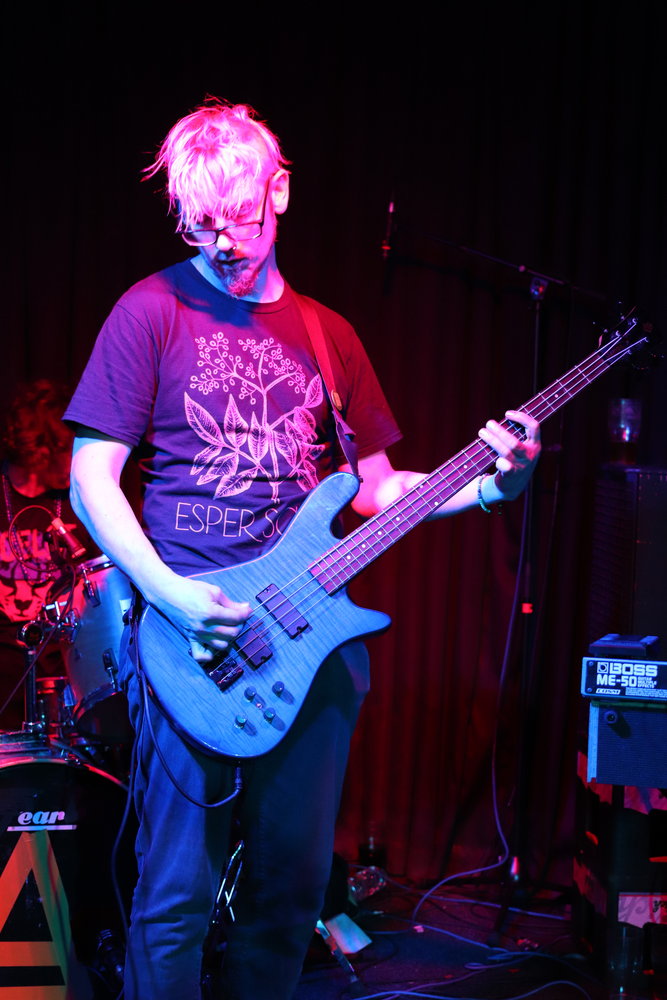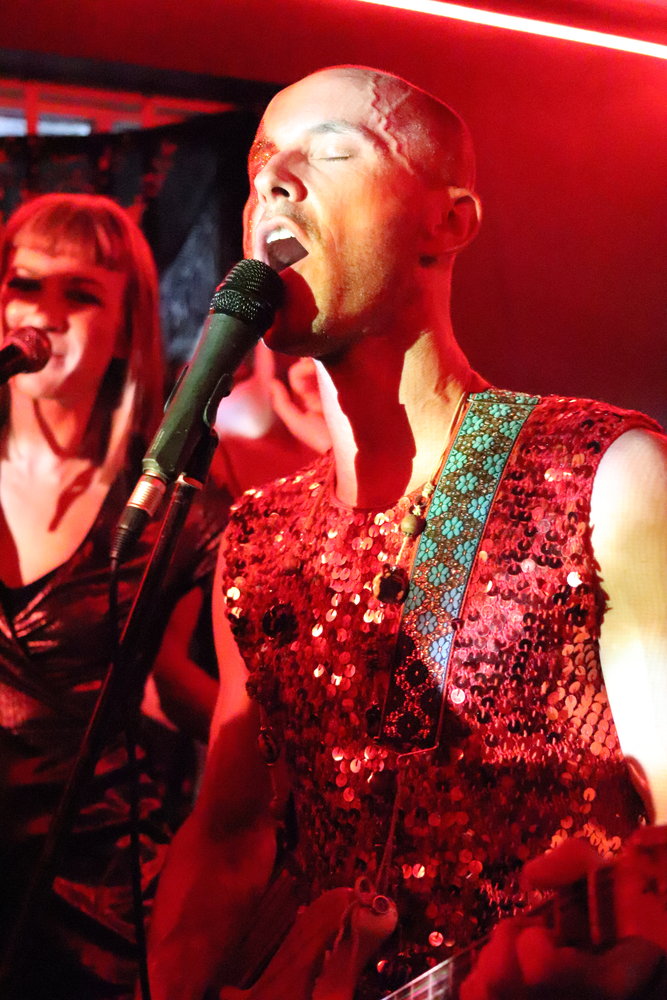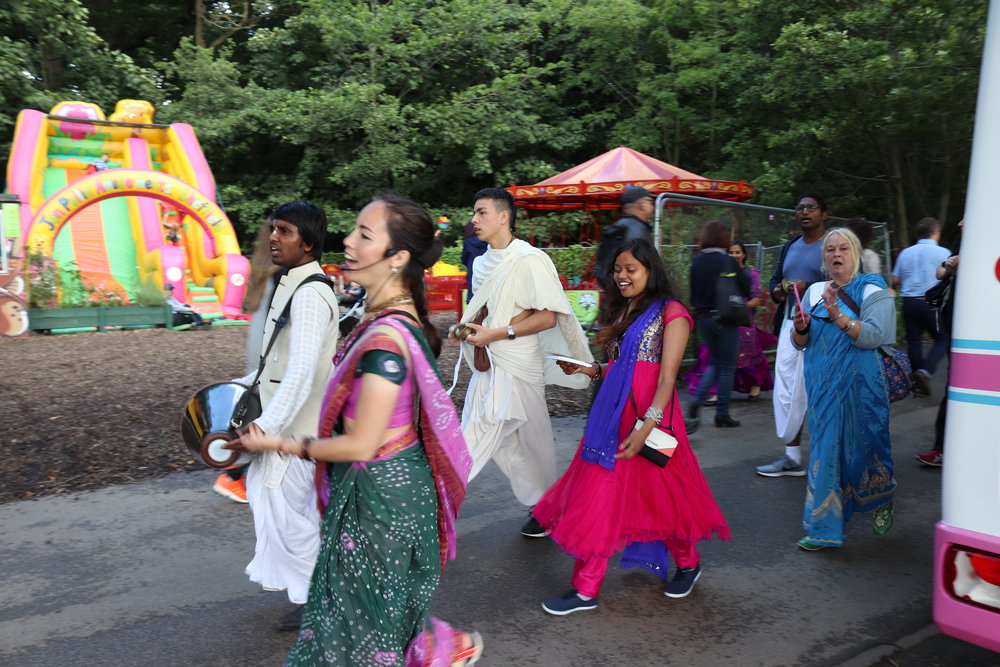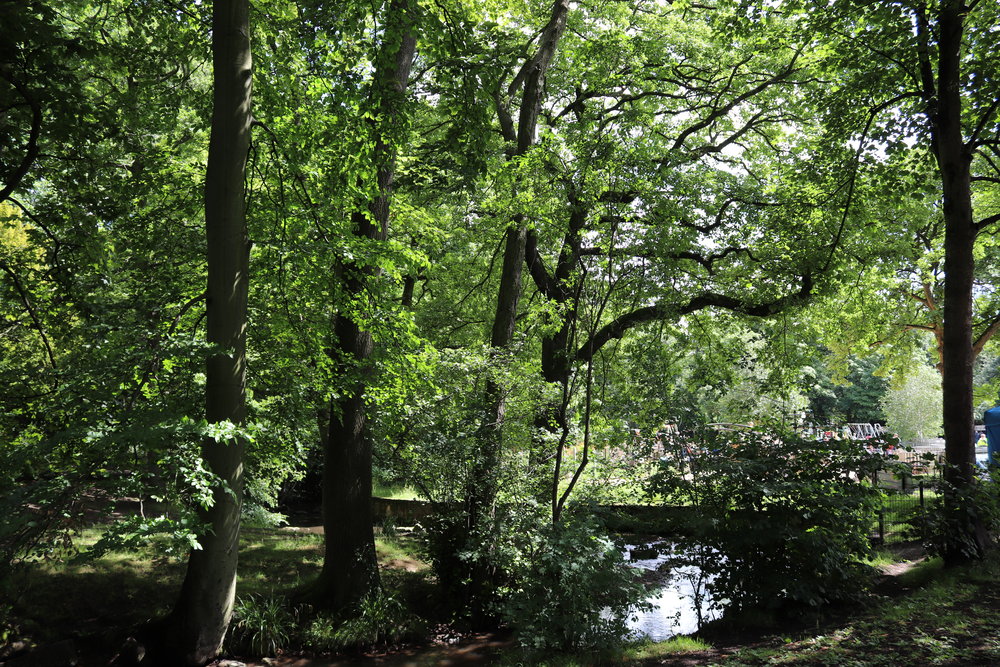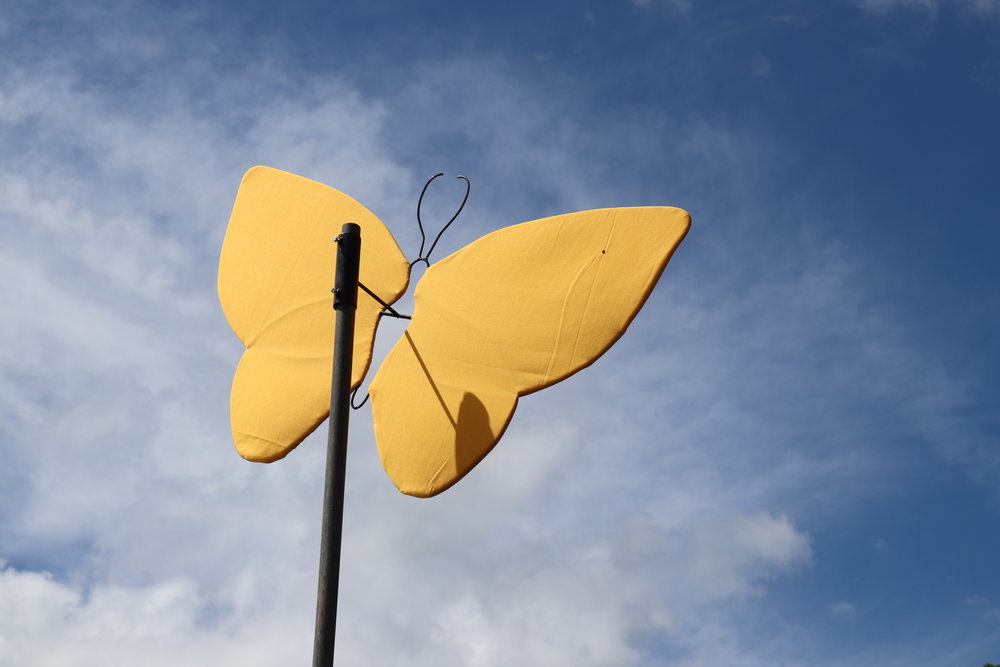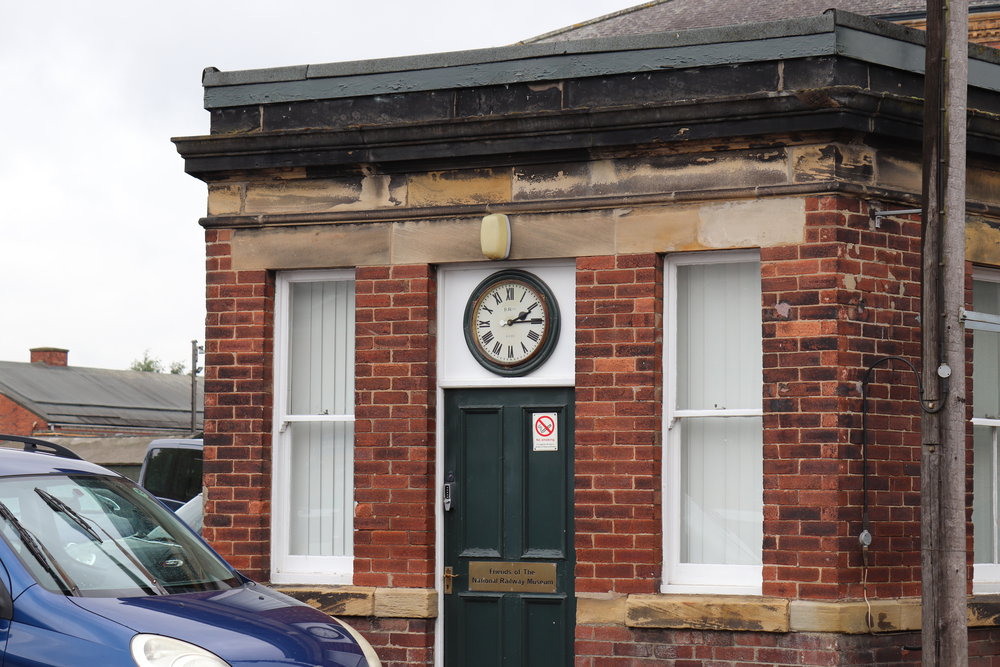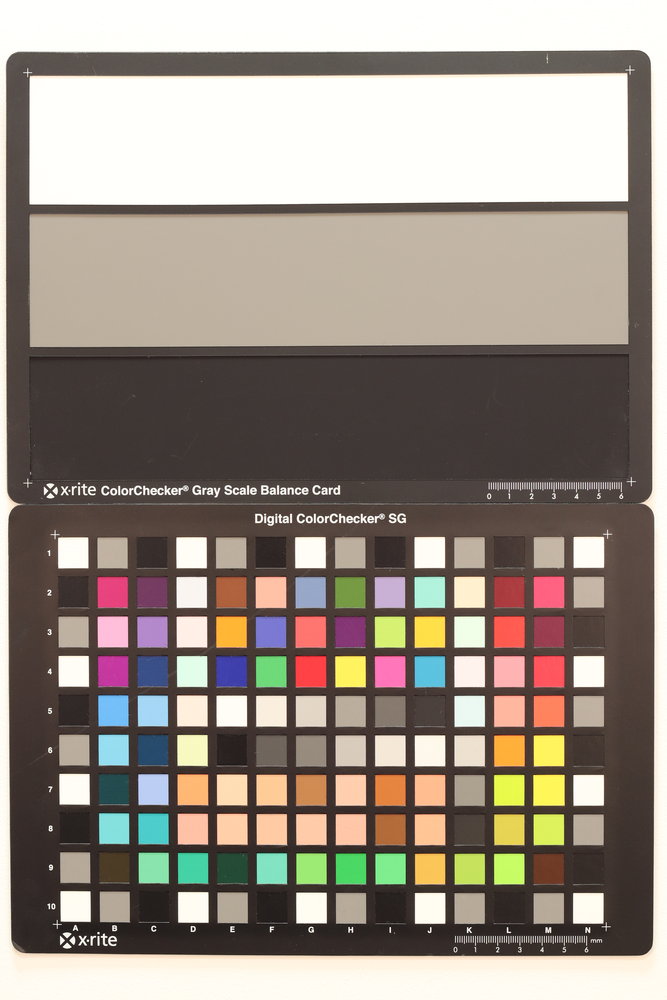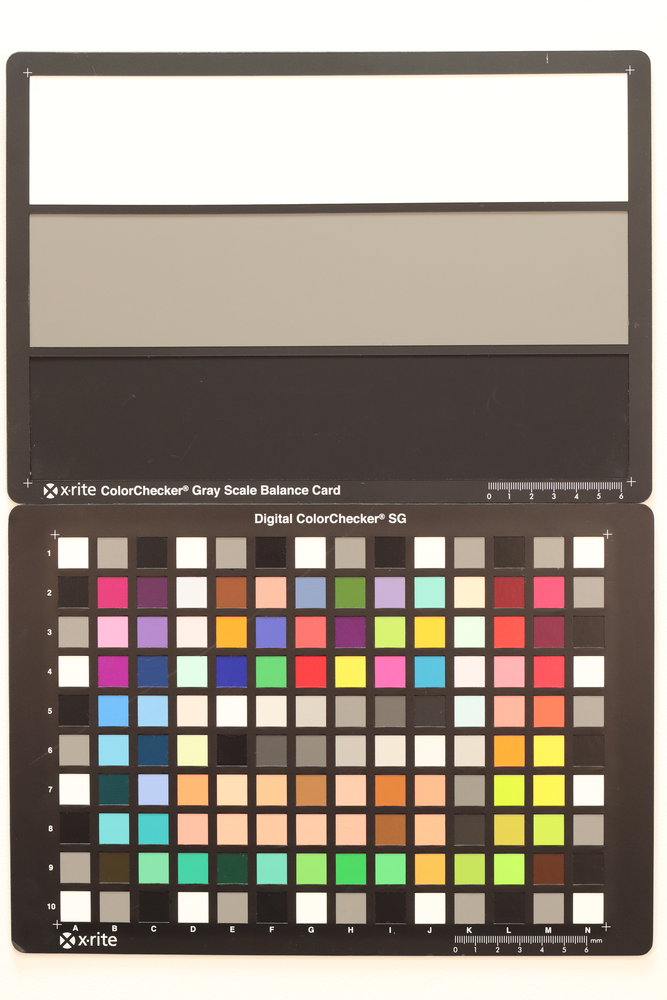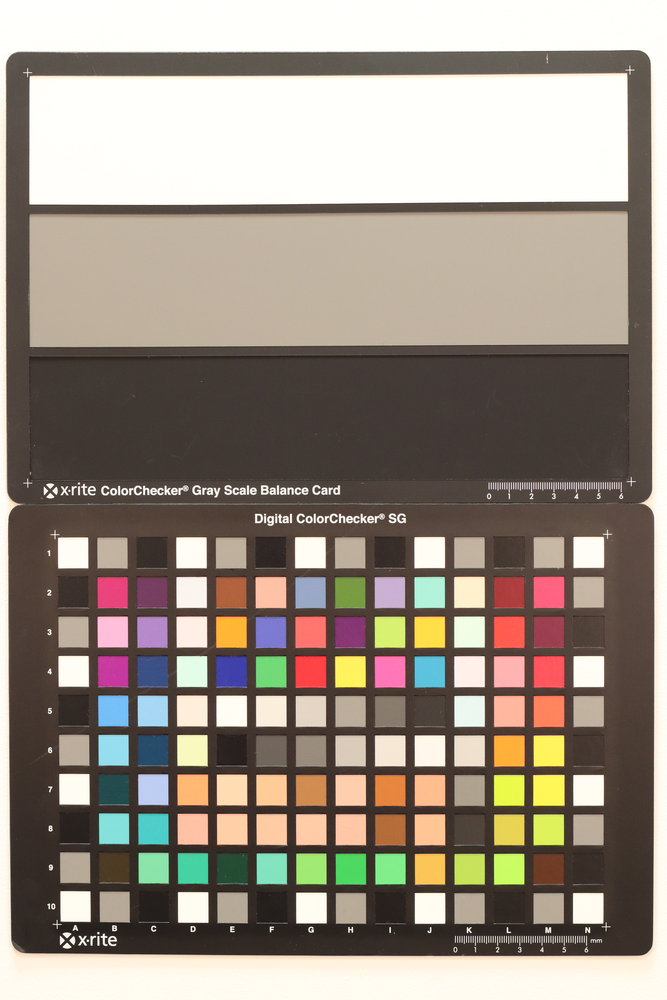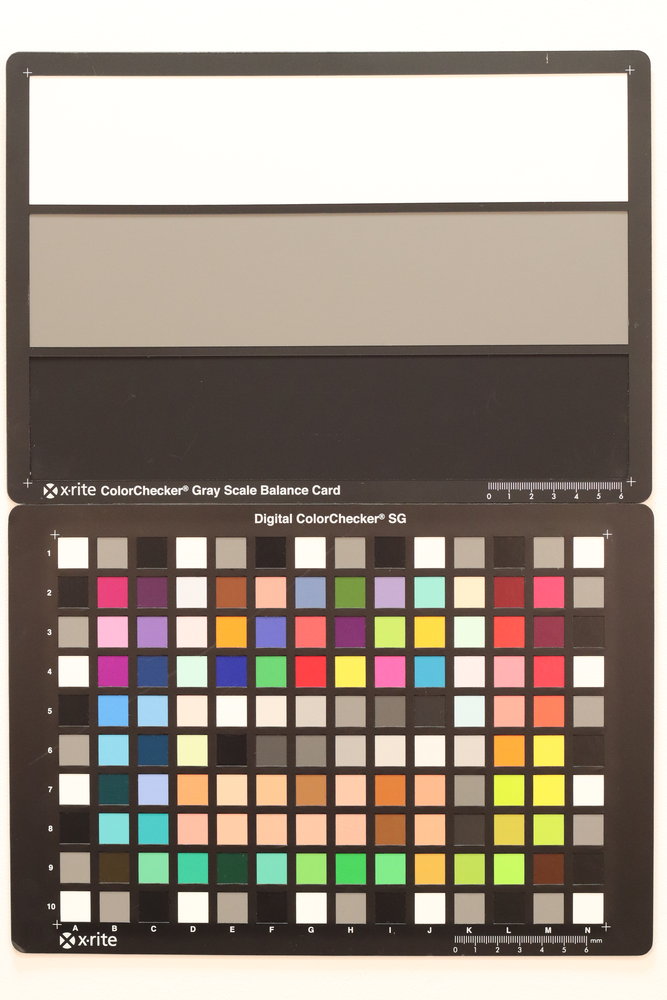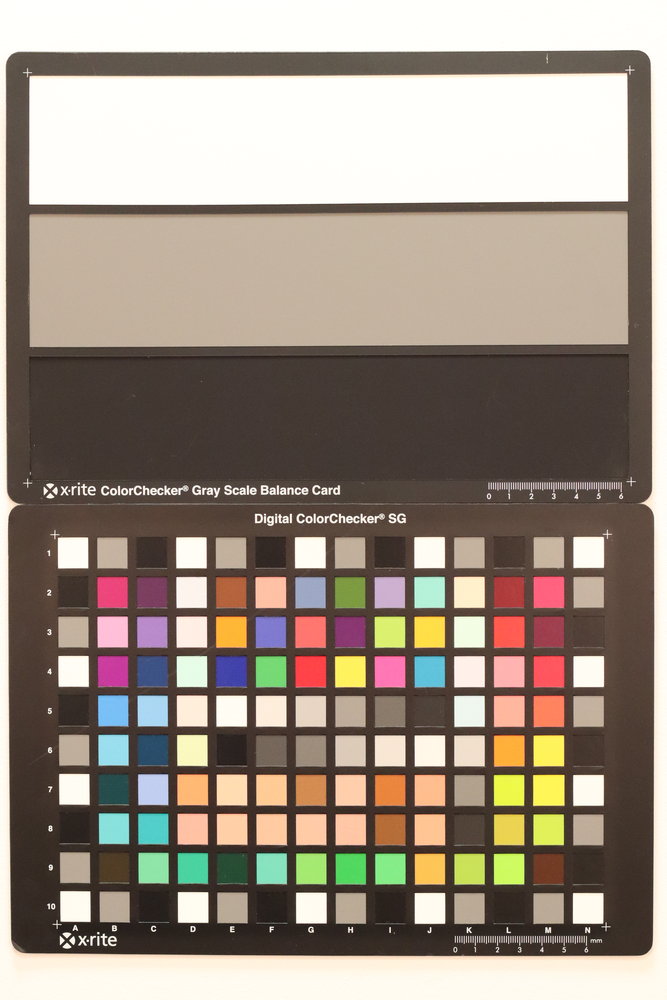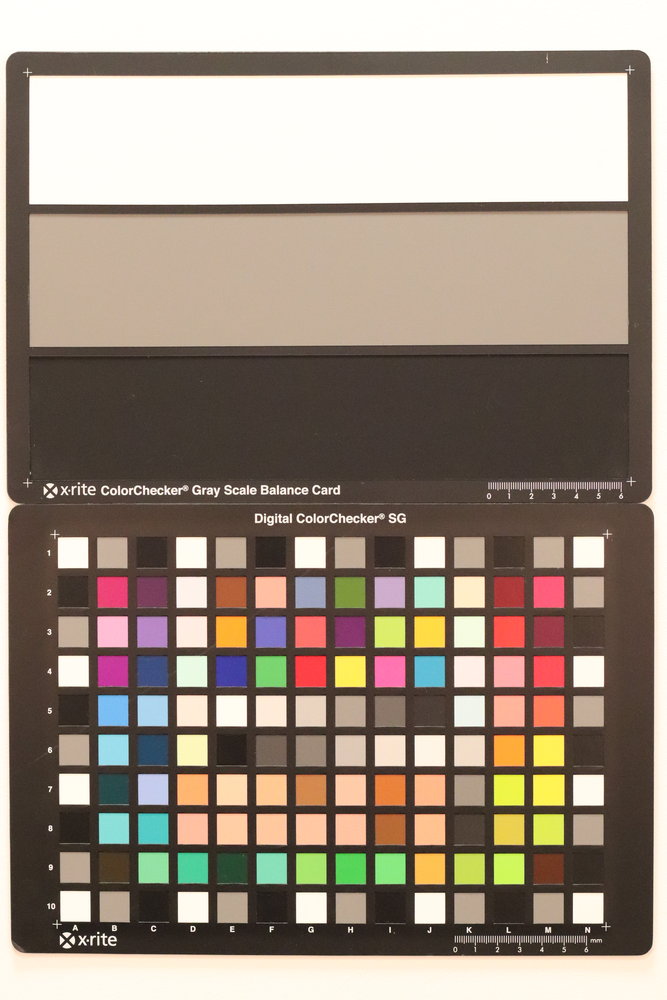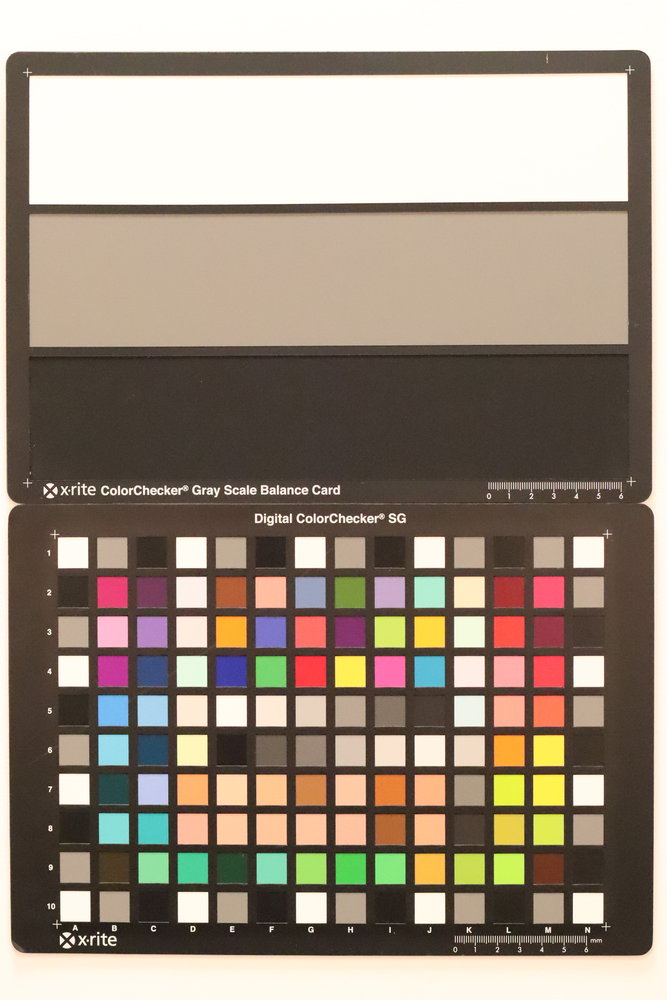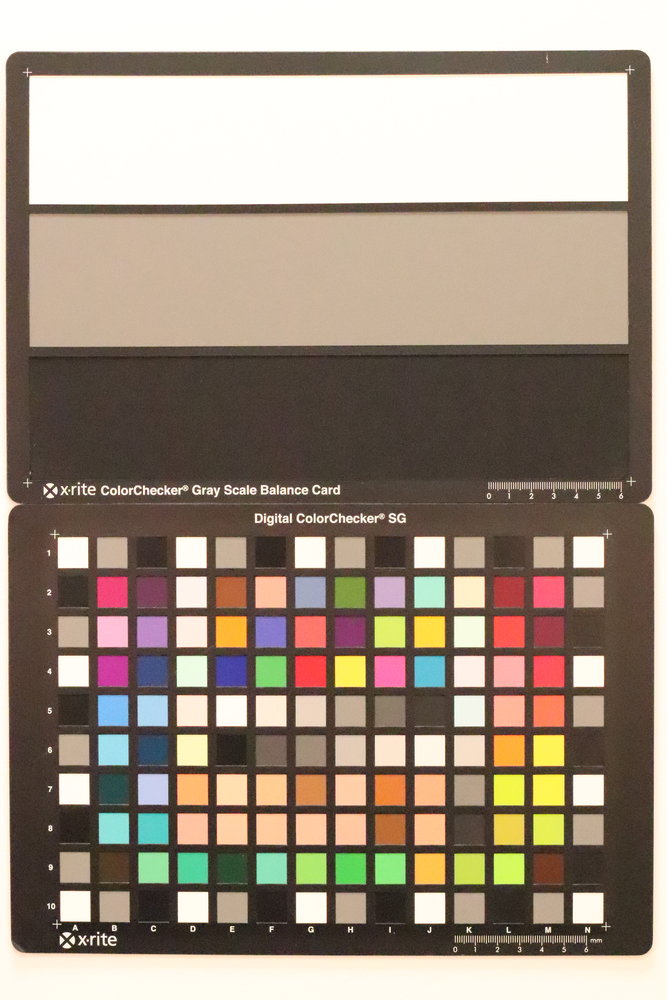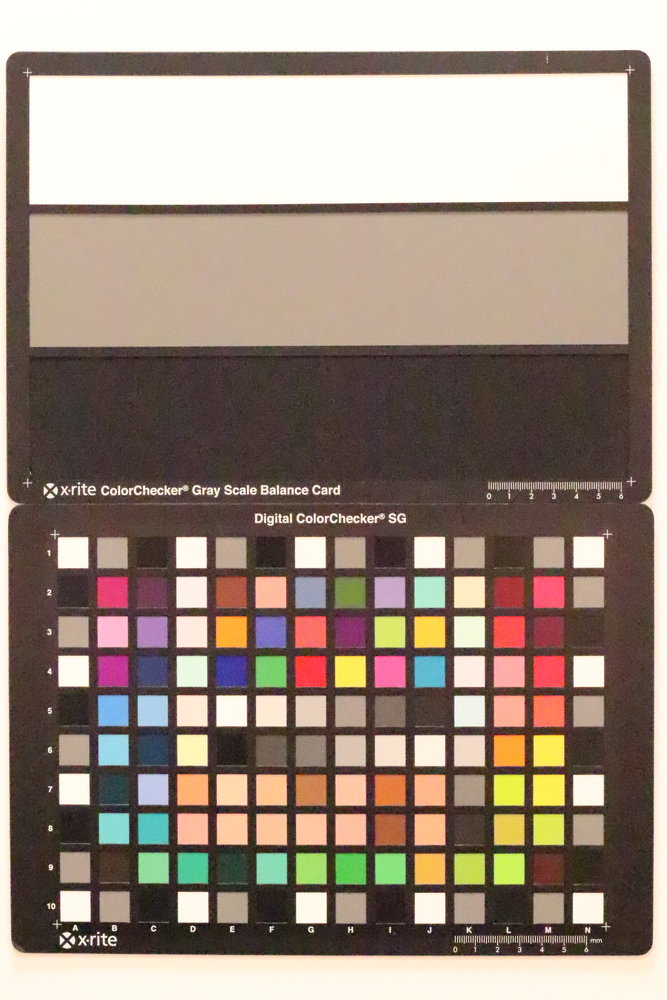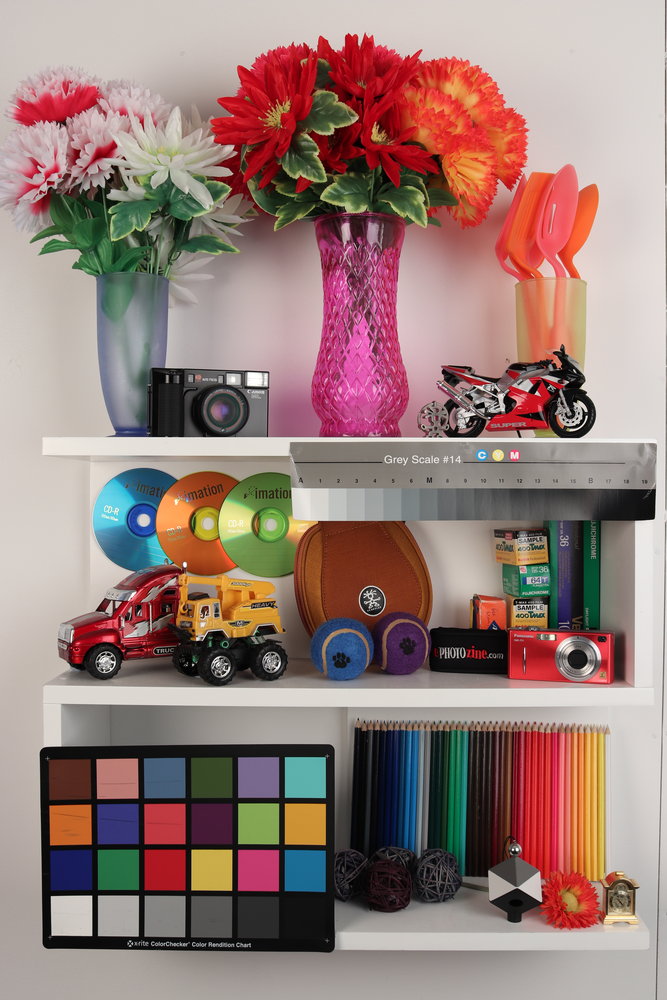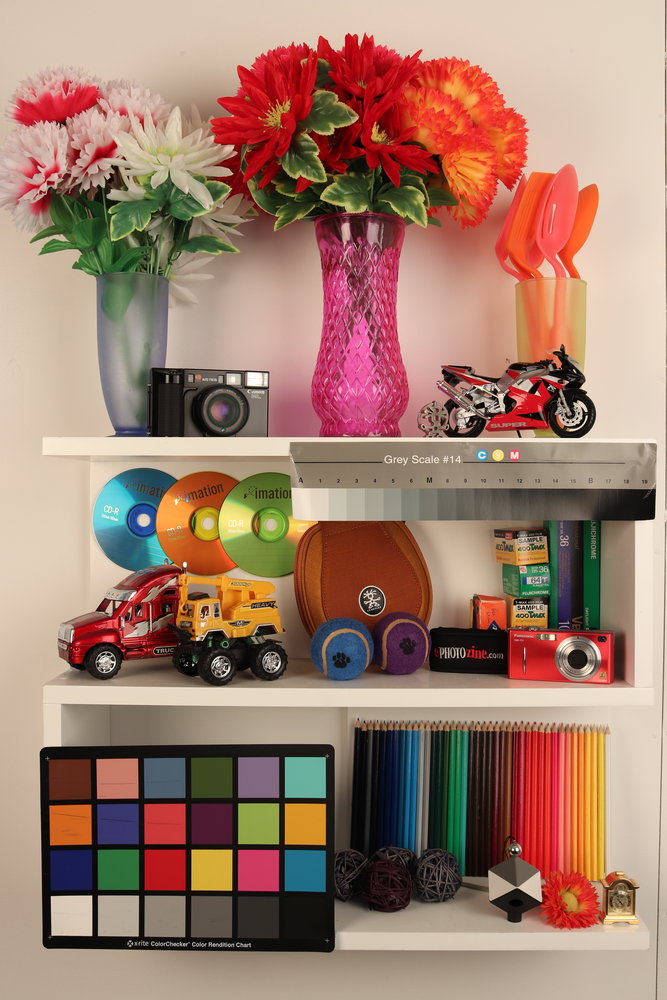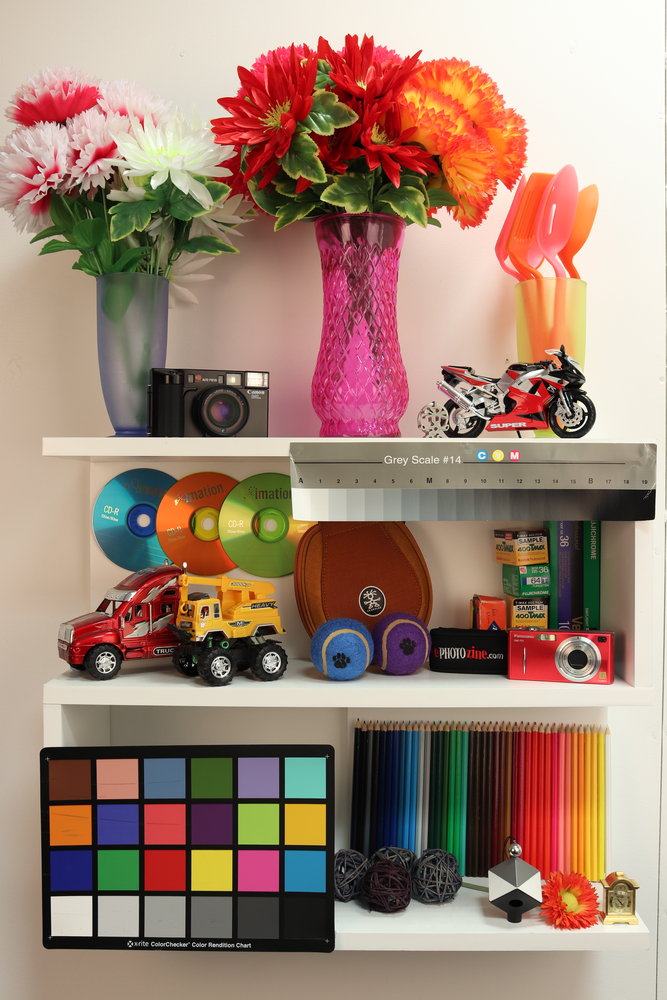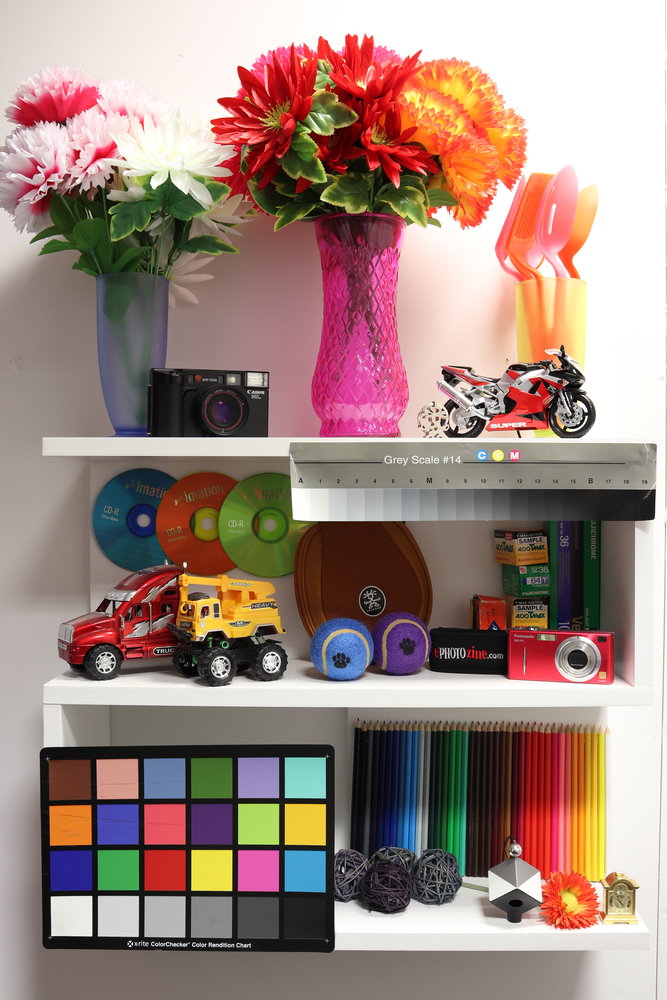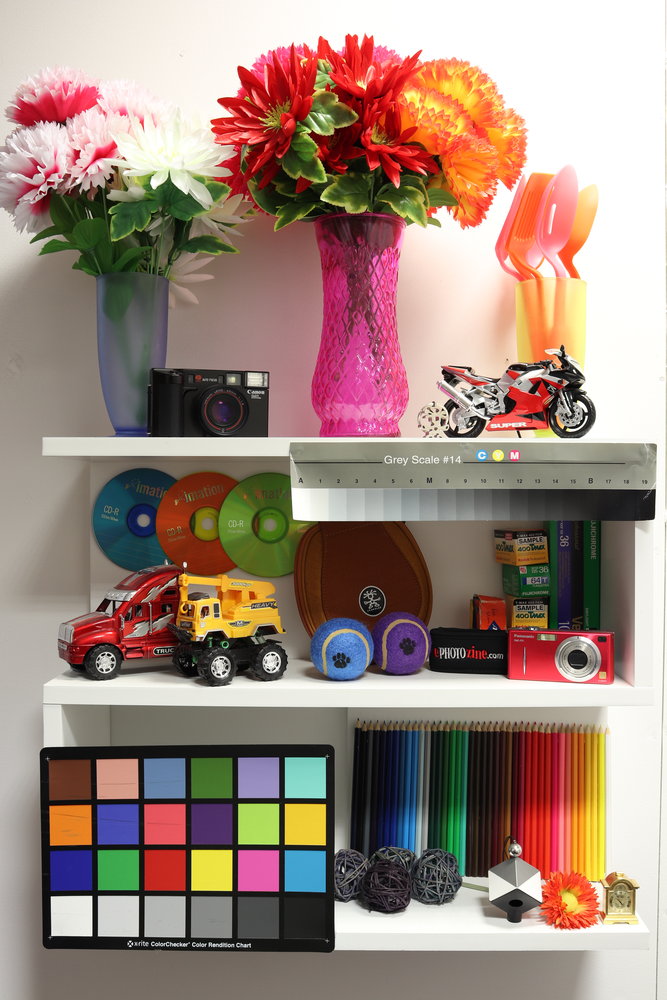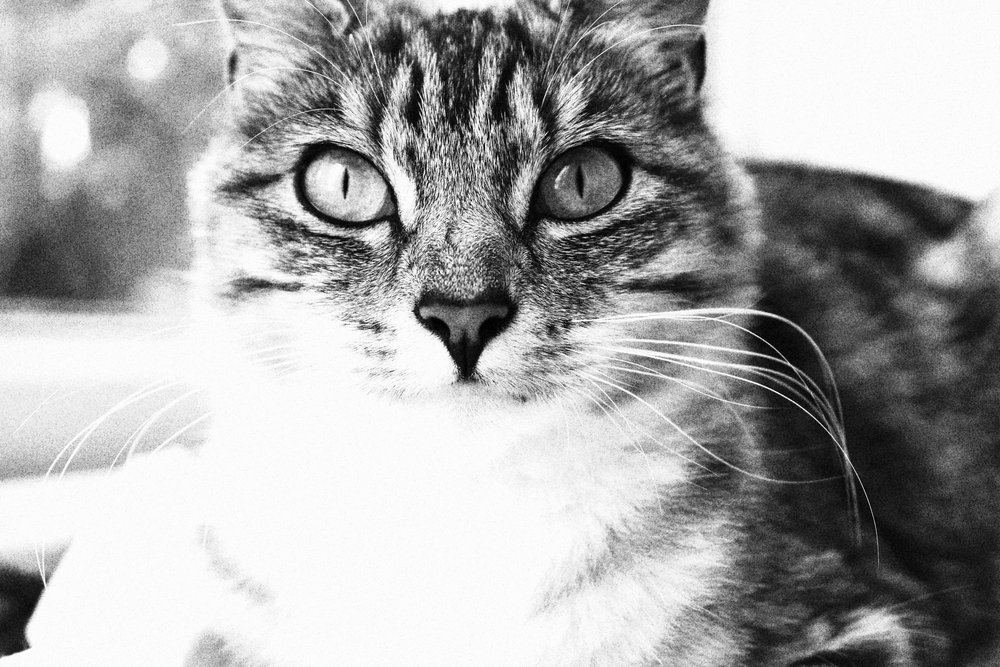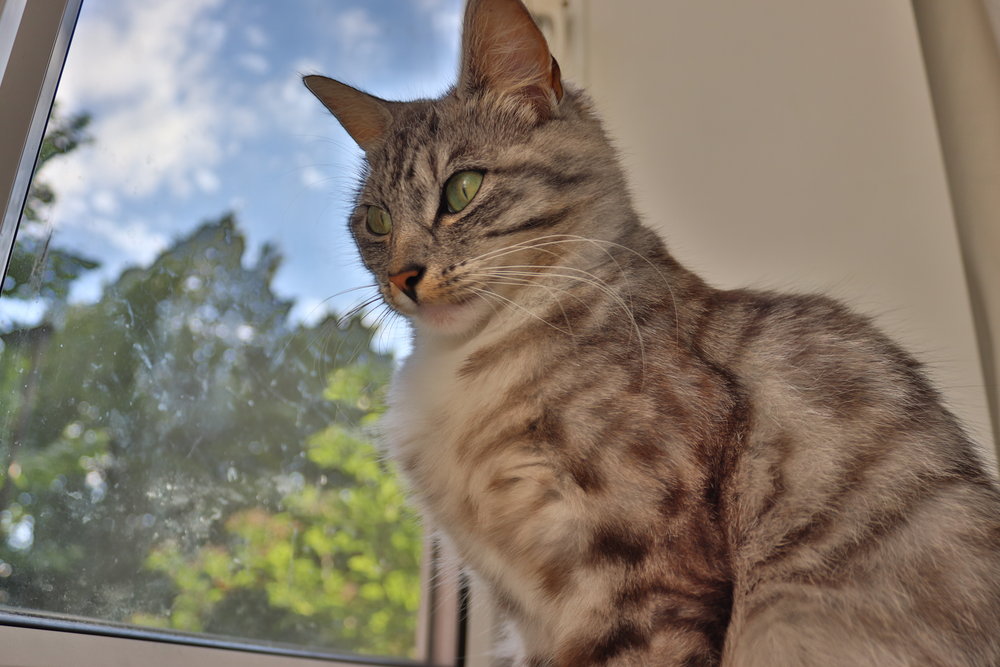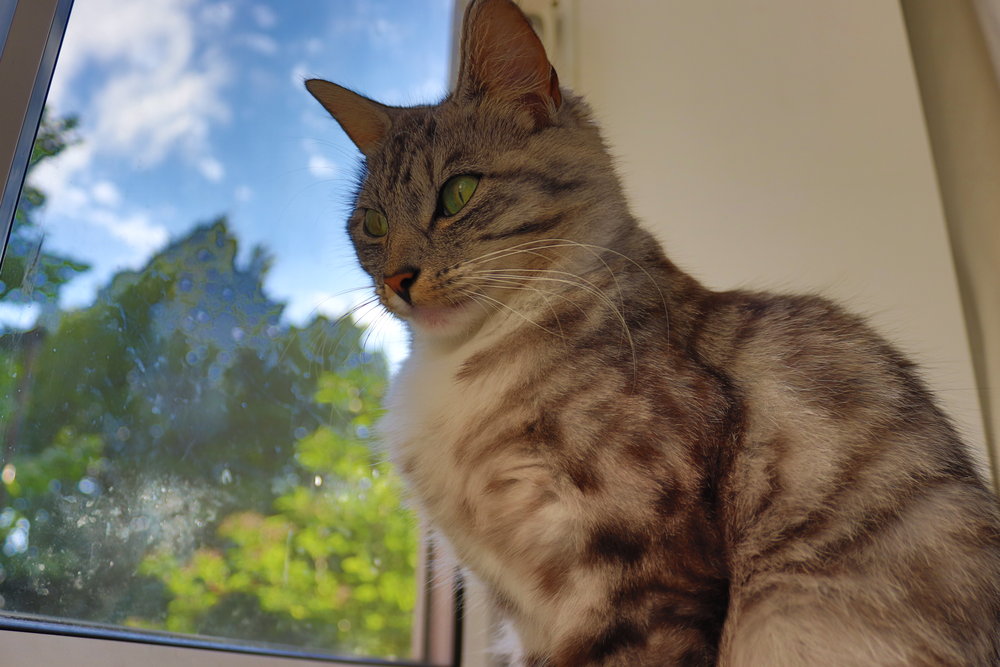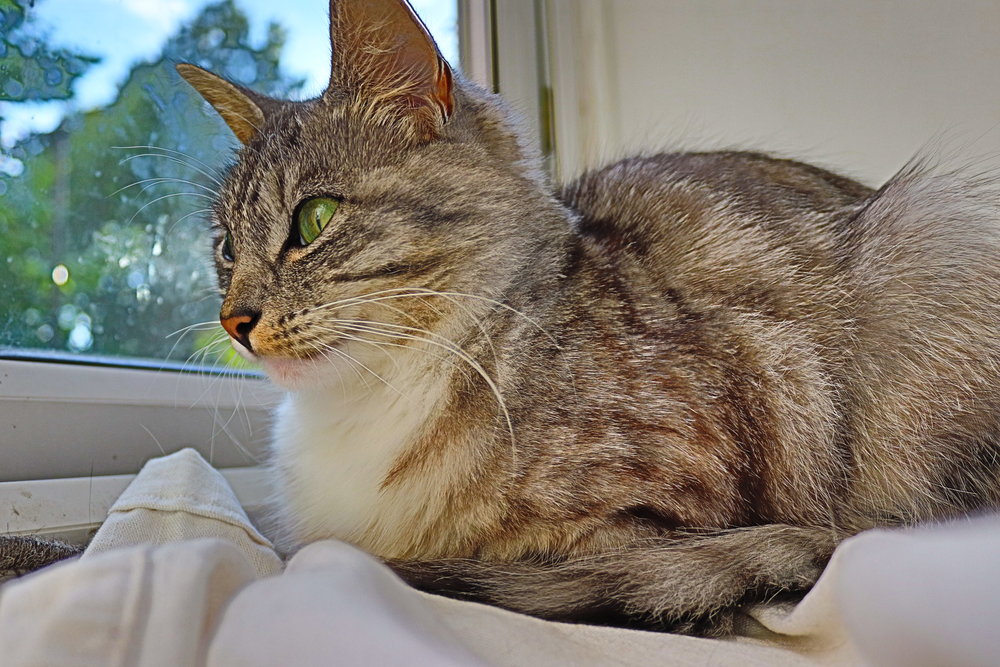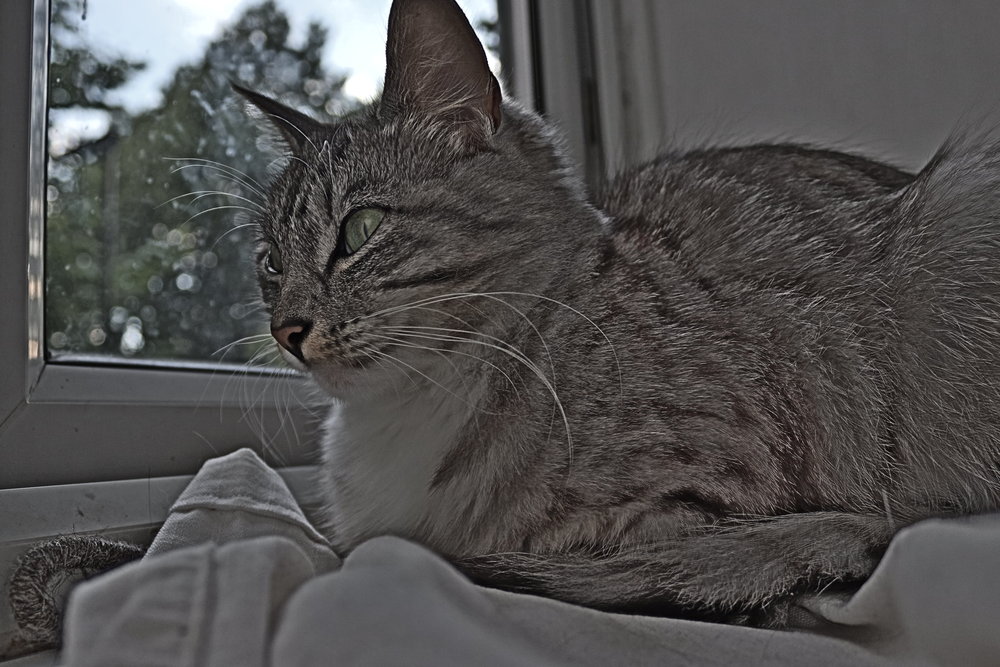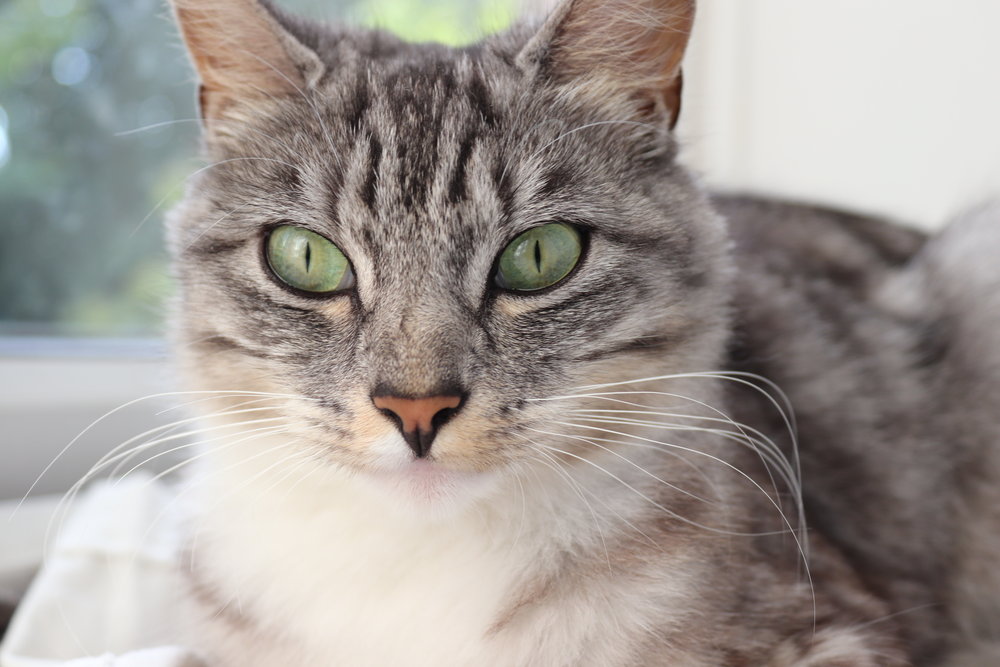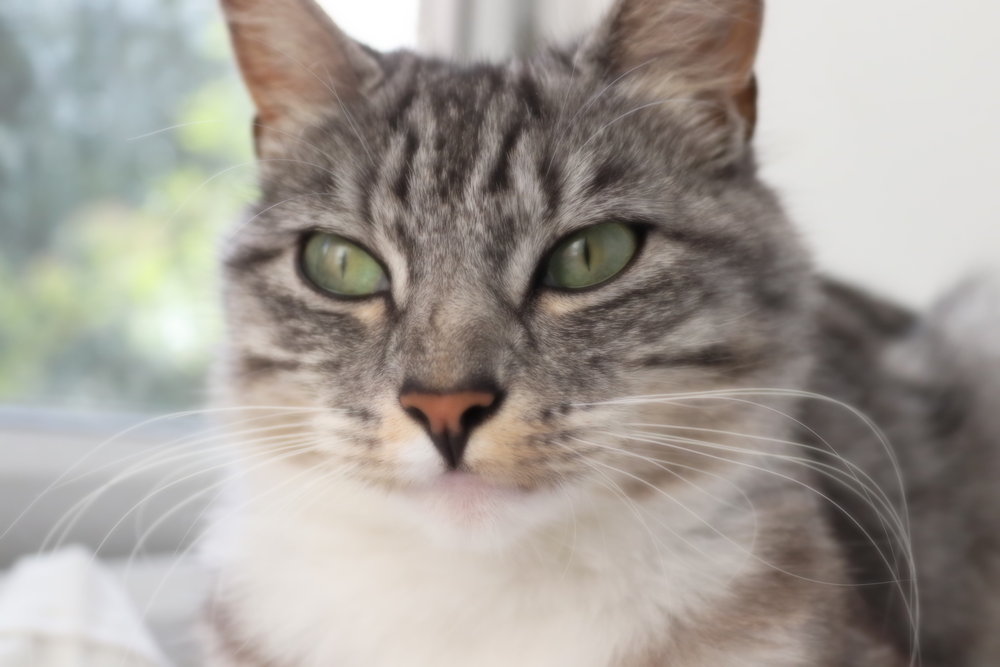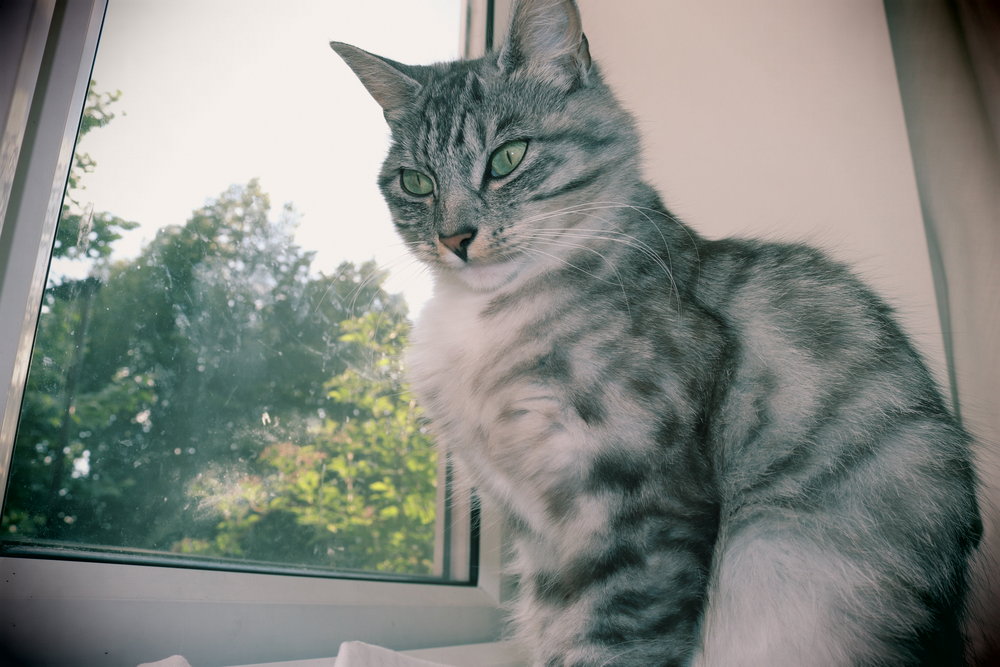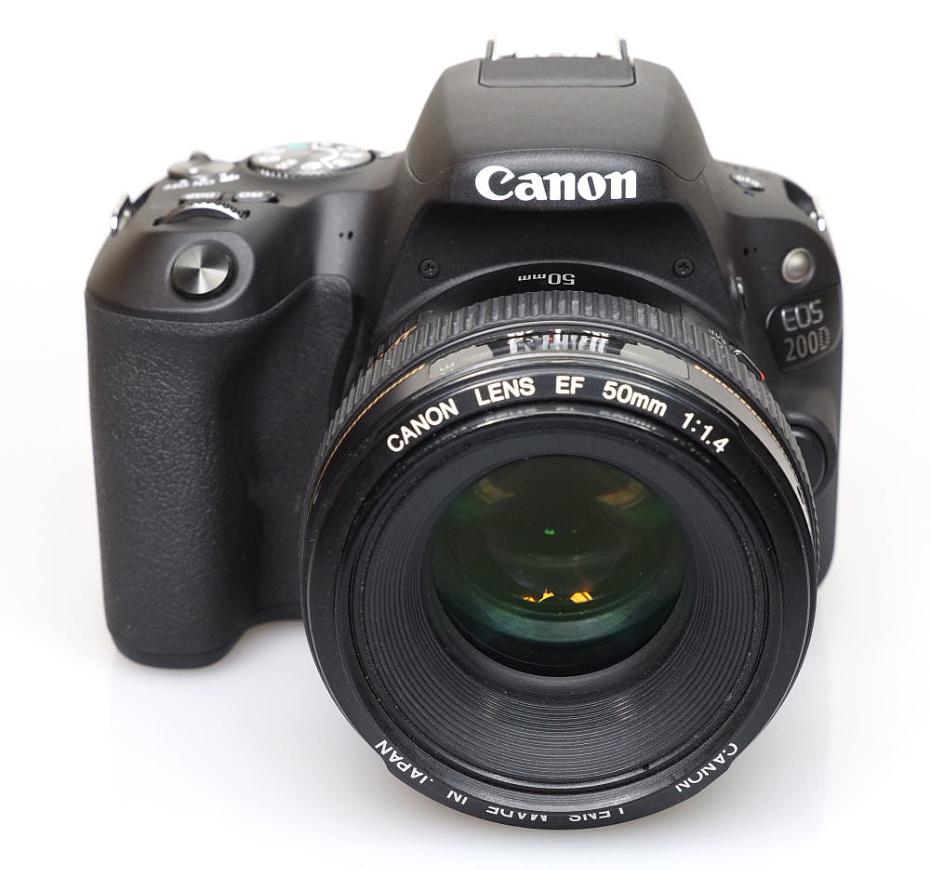
The Canon EOS 200D is Canon’s replacement for the 100D and is one of Canon’s smallest Digital SLRs available. The camera features the same 24mp APS-C CMOS sensor as the 800D, with ISO25600 (extends to ISO51200), 5fps continuous shooting, Full HD, 60fps video recording, with built-in Wi-Fi, NFC, and Bluetooth. The 100D has now been discontinued.
Canon EOS 200D Features
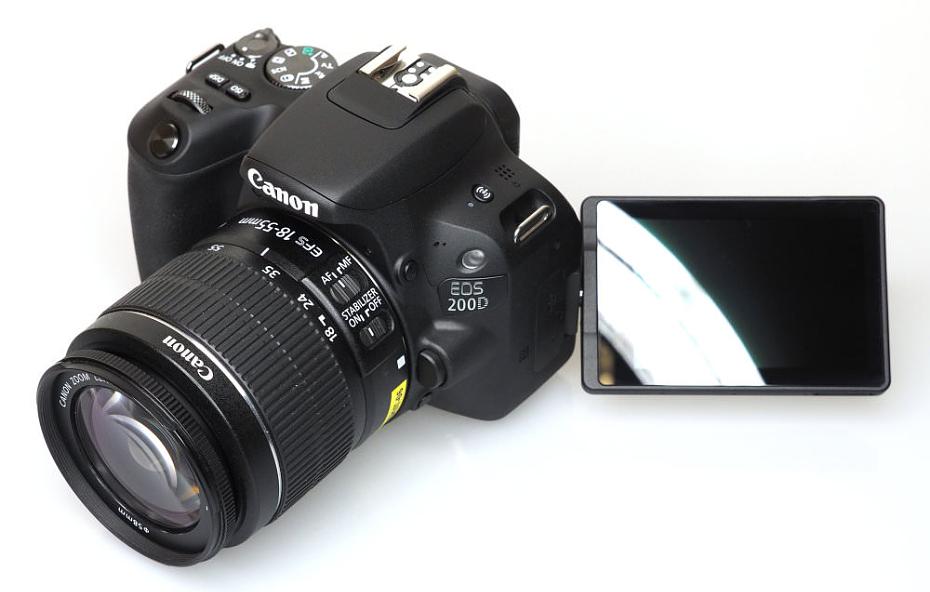
The Canon EOS 200D is available with the new Canon EF-S 18-55mm f/4-5.6 IS STM lens, that was introduced with the 77D and 800D. The lens is an ultra-compact kit lens, that Canon says is the World's smallest non-retractable kit lens. The lens offers up to 4-stops of Image Stabilisation (IS), with improved optics, and a size that is just 61.8mm long. When used with the new lens, the camera is said to offer the World's fastest focus for APS-C ILC cameras at 0.03s (when using the viewfinder).
Nb. The Canon EOS 200D is also known as the Canon Rebel SL2 (outside Europe).
The 200D features a vari-angle touch-screen, built-in guided user interface, and improved battery life of 650 shots.
Updated on the 200D compared to the 100D:
- New 24mp Dual-pixel APS-C CMOS sensor
- Increased ISO range (extends to ISO51200)
- 5fps continuous shooting
- 650 shot battery life (compared to 380 on the 100D)
- FullHD video up to 60/50fps
- Improved White Balance (Ambience, or White priority)
- New image processor (with additional lens correction)
- New graphical user interface with easy / guided mode
- Bluetooth and Wi-Fi built-in, connection button
The updates, with a new user interface, with built-in Wi-Fi, NFC and Bluetooth makes the camera easier to use for beginners, as well as being more appealing to a younger generation with the camera being available in three different colours. With NFC, it's quick to make a connection to a compatible Android device, and Bluetooth is also available for low-power image transfers.
The Canon EOS 200D is designed to be easy for beginners to pick up and use, without the traditional size of a DSLR.
FullHD video is recorded at 60fps, with stereo sound and a microphone socket. A lens with built-in optical image stabilisation (OIS) is recommended, as the camera does not feature in-camera image stabilisation.
There is a microphone socket on the side, a flash hot-shoe on top, plus a built-in pop-up flash. The 3inch vari-angle touch-screen can be tilted forwards so that it can be used as a selfie screen, and the built-in guide can be switched on and off. You can watch a video, below, which shows the new guide mode, as well as the options available.
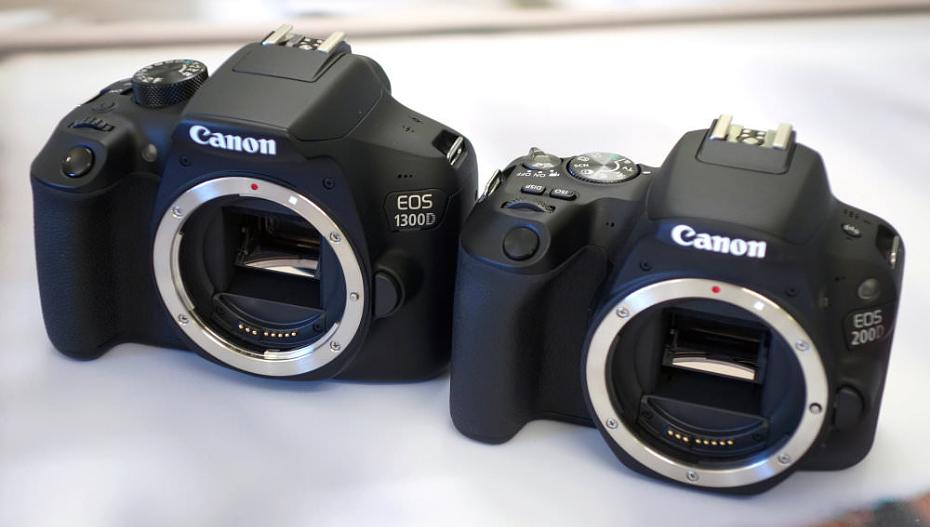
The 18mp Canon EOS 1300D is shown above, next to the new Canon EOS 200D.
Canon EOS 200D Key Features
- 24mp APS-C CMOS sensor
- Dual Pixel AF
- Digic 7 image processor
- 9 AF points, centre-cross type (49 in live-view)
- 3inch vari-angle touch-screen
- 0.87x magnification Optical Viewfinder (OVF)
- ISO100-ISO25600 (extends to ISO51200)
- 5fps continuous shooting
- FullHD video at 60fps
- Wi-Fi, NFC, Bluetooth
- Built-in guide
- Available in silver, black or white
Canon EOS 200D Handling
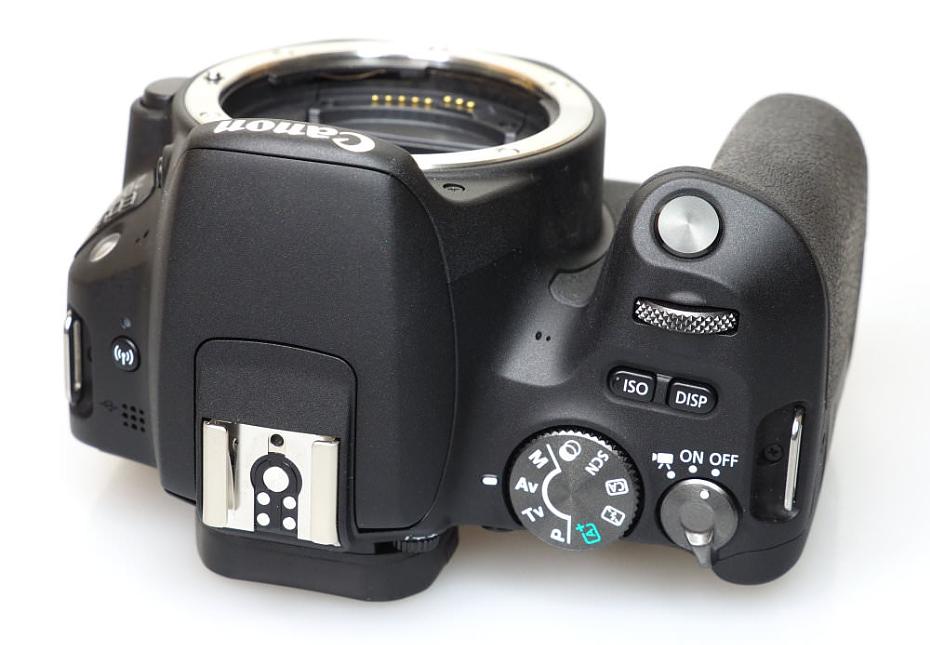
The Canon EOS 200D has a much larger grip than the 100D, which makes the camera more comfortable to hold, and also makes the camera slightly larger than the 100D. The camera has a top command dial, for changing settings, such as aperture or shutter speed when in Aperture and Shutter priority. There's a built-in pop-up flash, and the layout of controls and buttons is similar to other Canon EOS DSLRs. The camera doesn't feel like a budget or cut-down camera, with the same lens correction, and white balance options as more expensive DSLRs from Canon, including a white-priority option for Auto White Balance.
The camera has a plastic construction, however, this shouldn’t put you off the camera, with the camera feeling and looking solidly built. As a testament to this, there are many older models still going strong today. If you’re moving from another EOS camera, then the layout of buttons and controls will be very familiar. The on/off switch features a third position, which switches the camera into video mode.
There is one control wheel on the camera, meaning you'll need to use the rear AV / +/- button to switch between shutter and aperture when in manual mode.
The screen looks good, although the live-view refresh speed isn’t as quick as most mirrorless cameras, with a 30fps refresh rate. Using the touch-screen to change settings is easy, and the screen is very responsive to touch. Viewing angles are good, with a gapless screen, and being able to tilt the screen can make it easier to see what you are shooting.
There are 9 focus points, and these can be viewed in the optical viewfinder when shooting, or on the rear screen when using live view. You can even switch on display of focus points in playback mode so that you can confirm you focused on the desired point(s). In live-view, the focus area covers a large area of the image, and there is no penalty in focus speeds.
The optical viewfinder, whilst not the largest, features dioptre correction, and there is a soft rubber surround, making it comfortable to use both with or without glasses.
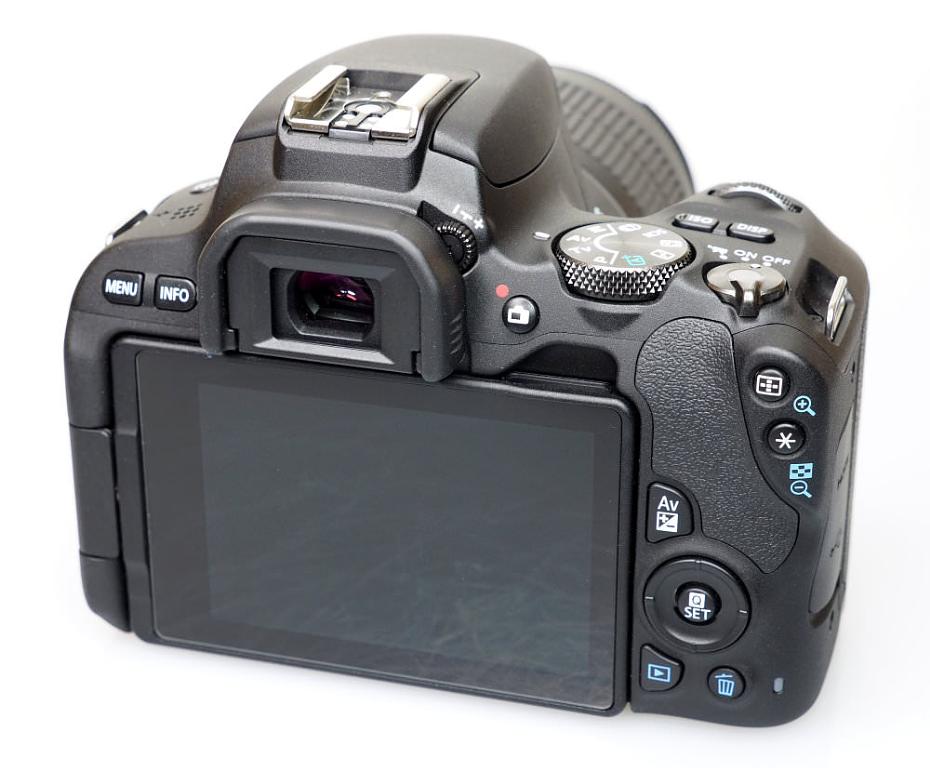
Wi-Fi features - Setting up a connection to your smartphone or tablet is relatively easy. As the app, Canon Camera Connect guides you through the process making it as easy as possible for you. Once setup, it’s easy to transfer images over, as well as remotely control the camera. You can also use the app to add location information to your photos.
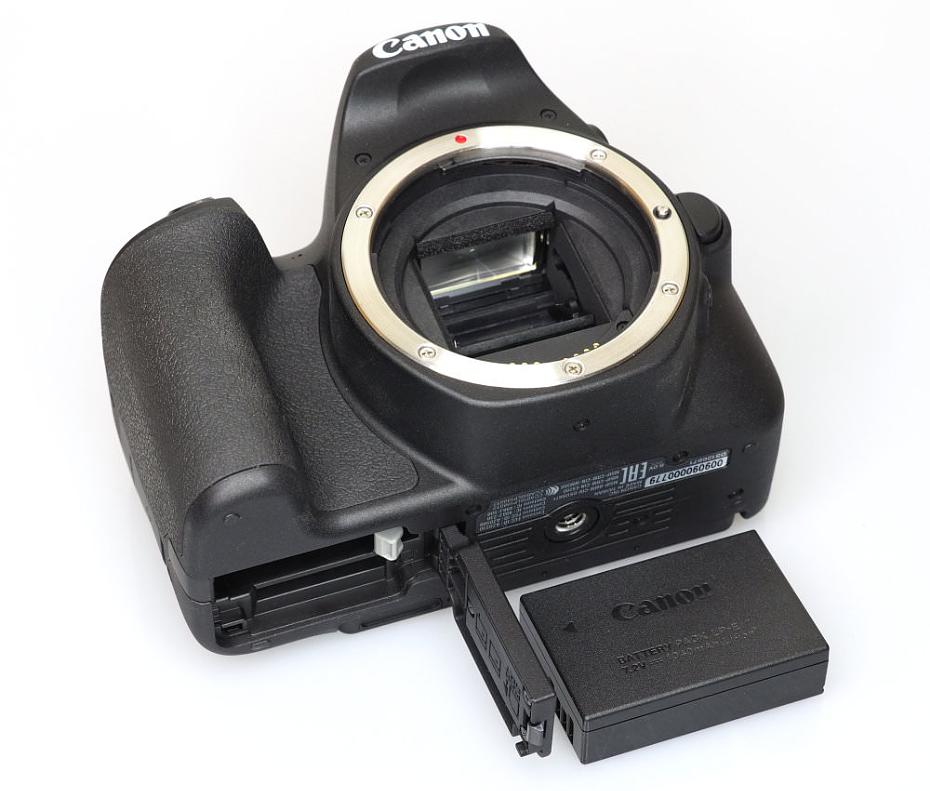
Battery life - Battery life is rated at 650 shots according to Canon / CIPA test results, which is very good and an improvement over the 380 shots possible on the 100D. This should save you money, as you're less likely to need to invest in a second battery.
Canon EOS 200D Performance
The performance section is where we look at the image quality performance of the camera. Additional sample photos and product shots are available in the Equipment Database, where you can add your own review, photos and product ratings.
Speed - We took a number of shots to test the camera's responsiveness, from switch on to first photo, shot to shot, focusing speed etc. We take a number of shots and then use the average to ensure accurate and consistent tests, making it easy to compare with other cameras.
| Shutter Response | <0.05secs (same for Live View) |
| Wide - Focus / Shutter Response | 0.2secs (0.2s for Live View) |
| Full zoom - Focus / Shutter Response | 0.15secs (0.15s for Live View) |
| Switch on Time to Taking a Photo | 0.6secs |
| Shot to Shot without Flash | 0.3secs |
| Shot to Shot with Flash | 0.5secs |
| Continuous Shooting - JPEG (shots before slow down) |
5fps (12 shots) |
| Continuous Shooting - RAW | 5fps (6 shots) |
We tested this with the 18-55mm f/3.5-5.6 IS II lens. Focus is very quick, as is shutter response, and this is equally as quick even when using live-view. Switch on time is good, as is shot to shot time. Continuous shooting is good, at 5fps, although the number of shots possible before slowdown (JPEG) is quite limited.
Canon EOS 200D Sample Photos
Sample Photos - The camera gives images with good colour reproduction. Skin tones are good, and the camera gives pleasing JPEG results straight from the camera. Exposure is reliable, and the camera copes well with a variety of scenes. Using the "Auto Lighting Optimizer" (ALO) option you can extend the dynamic range recorded in shots, without necessarily having to resort to using raw images, or the HDR shooting options. For sharper images, you can process raw files, or adjust the in-camera settings.
The lack of face-detection focus when using the normal focusing mode, means that the success rate of portrait shots can be low, especially when using a bright prime lens. If you want to use face-detection focus, then you'll need to switch to live-view.
Canon EOS 200D Lens test images
Lens Performance - The camera has built-in lens correction, including peripheral illumination correction, to correct for vignetting, chromatic aberration, distortion, plus diffraction. This means it can correct for any issues that your lens may have, as long as the camera has the lens data loaded into it.
We used the 18-55mm IS II lens which performed well at both the wide-angle and telephoto ends of the lens, with rapid focus and good image stabilisation. We also used the Canon EF 40mm f/2.8 STM lens with the camera, and this made the whole system particularly compact, and easy to carry.
Canon EOS 200D ISO test images
ISO Noise Performance - The level of detail captured is very good, particularly at the lower ISO speeds from ISO100 to ISO1600. It's not until you get to ISO3200 till you start to notice noise in images, and at this setting, results are very good. ISO6400 produces images that should still be usable. ISO12800 and ISO25600 may provide usable images, however, we'd recommend resizing images, or further processing (such as processing the raw file, or converting to black and white), depending on your needs. ISO51200 is best avoided entirely.
Canon EOS 200D White-balance test images
White Balance Performance - Auto White Balance (AWB) gives slightly warm results under tungsten lighting, and by using the white priority setting, the AWB can give much more accurate results, which is great for product shots. Using the tungsten preset gives warm results. The camera performs well under mixed lighting. AWB performs well under fluorescent lighting, and the preset gives a very slight colour cast. Thanks to the "White priority" AWB setting, and the good AWB performance, you shouldn't need to use any of the presets.
Canon EOS 200D Digital filters
Digital Filters - There are a number of effects available, (Grainy B/W, Soft focus, Fish-eye Effect, Water painting effect, Toy camera effect, Miniature effect), and HDR art modes. The HDR art modes are a little dramatic, and un-natural looking, with the HDR scene mode giving more natural results. There is no panoramic mode.
Video - The camera can record FullHD video at 60, 50, 30, 25 or 24fps, with stereo sound. There's also a microphone socket if you want to use an external microphone. You can use the movie mode in auto or manual modes, and there's a time-lapse movie mode as well. You can use ISO100 to ISO12800 (extended). Video quality is good, with the camera doing a good job to focus even in low-light. Video footage will benefit from the use of a lens with optical image stabilisation for the best quality, or the use of a tripod. Additional sample videos on the ePHOTOzine YouTube Channel.
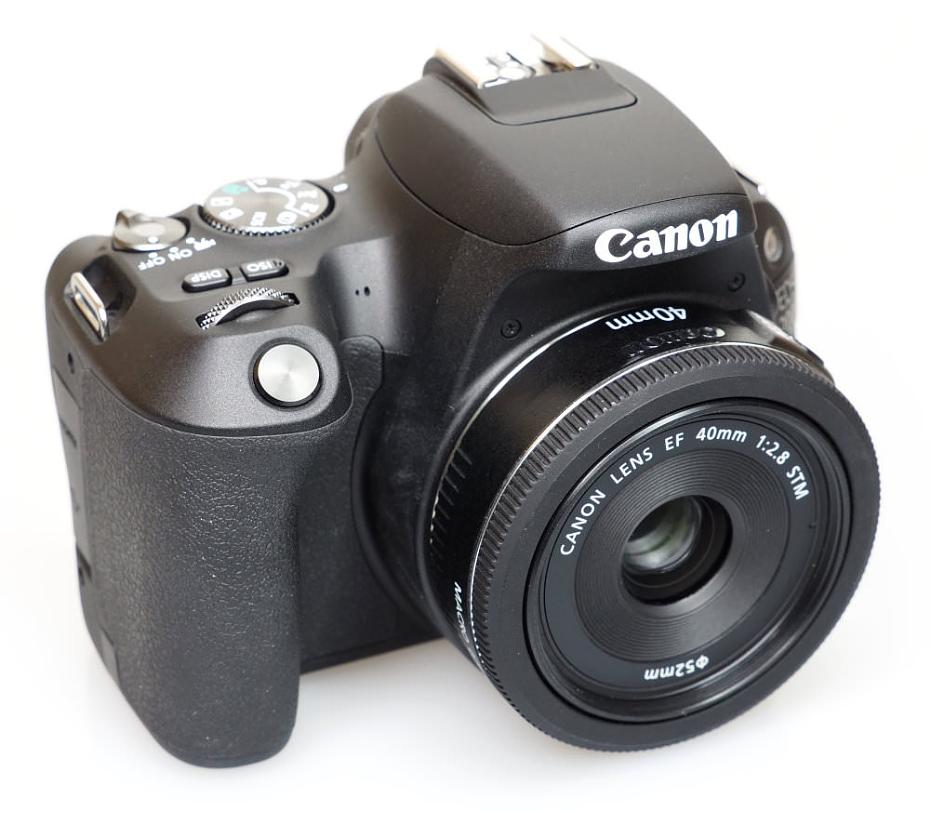
Value For Money
The Canon EOS 200D is available for £579 body only, or £679 with 18-55mm f/4-5.6 IS STM lens. This is just a little bit more than the Canon EOS 750D, and cheaper than the 800D. If you're looking for a lower-priced DSLR from Canon, then you have the choice of the 1300D, 700D, 750D (£549), and 800D. The range then goes upwards to the 77D, the 80D, and on to the 7D Mark II at the top of the APS-C range. The 200D sits somewhere between the 750D and 800D based on price alone.
The nearest competitors, or rather, the smallest DSLRs from the competition includes the Pentax K-S2 (£579 with lens) and Nikon D5600 (£649 with lens), with the K-S2 being slightly smaller.
For mirrorless cameras, have a look here, with top alternatives being the Panasonic Lumix G80, Fujifilm X-T20, Olympus OM-D E-M10 Mark II, and Olympus OM-D E-M5 Mark II. Have a look at more DSLR cameras Top 10 APS-C DSLRs. You'll also need to buy a memory card and a case or bag to keep your camera safe and protected - have a look at our complete guide to camera bags.
Canon EOS 200D Verdict
With a gap of four years, the Canon EOS 200D offers a significant update to the 100D, with a 24mp sensor, white priority white balance (great for product shots), improved continuous shooting speed (5fps), improved battery life (650 shots), impressive Live view focus performance, built-in Wi-Fi, Bluetooth, NFC, and a new vari-angle touch-screen.
The 200D is ultra-compact for a DSLR when used with the Canon 40mm f/2.8 pancake lens, and this makes the camera a great tool to pick up and take with you everywhere you go, compared to a larger DSLR. There's also a good sized handgrip making the camera comfortable to hold. The user interface has been updated, and the touch-screen makes changing settings a breeze.
Never before has there been such an extensive range of APS-C Canon DSLRs to choose from. There's also a wide range of lenses available, and to get the best out of the camera, prime lenses are recommended.
The compact size, reliable auto focus (even in low-light), and great image quality, combined with excellent battery life, makes the Canon EOS 200D a great choice. For the more advanced photographer, who likes to have direct control over manual settings, plus more focus points, the Canon EOS 77D would be a better match. For those who want a compact DSLR, the 200D is a winner.
|
The Canon EOS 200D is the smallest Canon DSLR, yet still offers great handling, and excellent image quality. |
